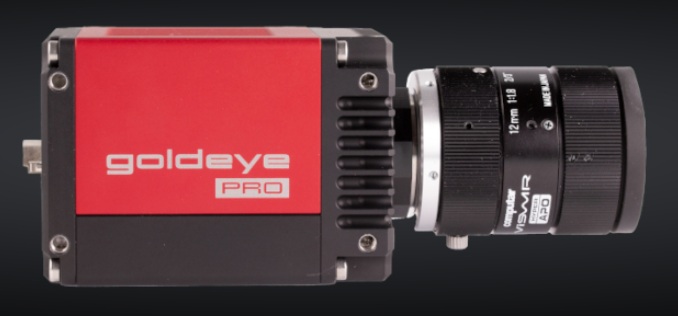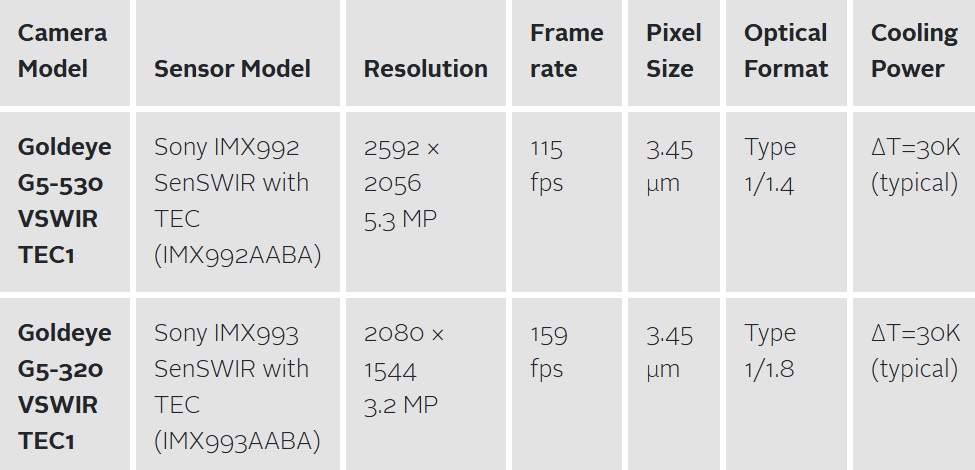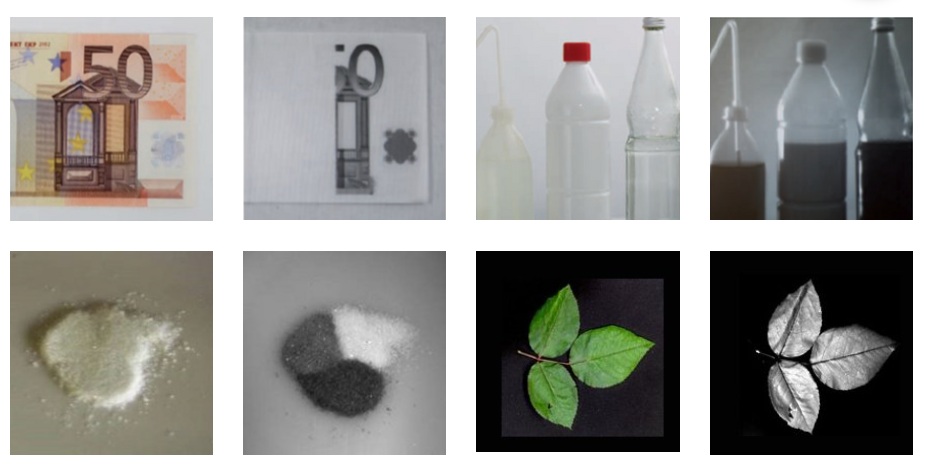Available in 5.3 and 3.2 MP sensor options, the 5 GigE interface delivers framerates exceeding 100 fps. Based on the TEC-version of Sony’s IMX992/993 SenSWIR sensors, the cameras are sensitive from 400nm to 1,700nm, so they are classified as VSWIR. With a single sensor covering both the visible and SWIR range, new economies are possible for applications needing that spectral coverage.
Even if you don’t need VIS and just want SWIR…
These are compelling for SWIR applications for two key reasons:
- They achieve impressive framerates for large sensors (by SWIR standards), at 115 fps for the 5.3 MP, and 159 fps for the 3.2 MP model. With a very affordable 5 GigE interface.
- Outstanding image quality ideal for demanding applications.

Our previous “coming soon” blog summarized key features, suggested applications, and a first look, so below we’ll go deeper now that the products are fully released.
Thermoelectric cooling (TEC) for image quality
The InGaAs (indium gallium arsenide) sensors used for SWIR imaging deliver the best images when temperature-stabilized. That’s provided by the thermoelectric cooling (TEC). That helps reduce dark noise and thermal current.
Must an InGaAs SWIR camera use TEC?
No, it’s not a requirement. Allied Vision is a leading producer of SWIR cameras, and while many include thermoelectric cooling, certain models do not. See all Allied Vision SWIR cameras and note some are “TECless.”
Whether your application requires TEC or not comes down to framerates, duty cycles, and overall performance demands. As with many engineering and design questions, how good is good enough?
Overview
Here are the key specifications at a glance:

For price quote or more information on either:
| Goldeye Pro 5GigE G5-320 VSWIR TEC1 | Goldeye Pro 5GigE G5-530 VSWIR TEC1 |

Features of note
Both models offer 12- and 10-bit sensor readout modes for achieving the highest possible dynamic range.
Both offer region-of-interest control to speed up frame rates and optimize bandwidth usage.
Both offer look-up tables to increase contrast.
Both provide digital binning and gain control to increase sensitivity.
And there are multiple user sets are available to simplify camera setup.
Applications
SWIR sees things that visible imaging cannot. (Likewise for UV, but that’s beyond the scope of this piece.) SWIR imaging can be mapped to “pseudo” images for human viewing – if required.
More to the point, machine vision applications get the job done in real-time without human involvement. Sort those materials. Monitor the perimeter for intruders. Optimize crop irrigation. etc.
If SWIR pseudo images help to get the juices flowing, here are a few:

Vision Systems Design award-winner
While the award was earned in China, the cameras perform the same in whatever country they are deployed in.

1st Vision’s sales engineers have over 100 years of combined experience to assist in your camera and components selection. With a large portfolio of cameras, lenses, cables, NIC cards and industrial computers, we can provide a full vision solution!
About you: We want to hear from you! We’ve built our brand on our know-how and like to educate the marketplace on imaging technology topics… What would you like to hear about?… Drop a line to info@1stvision.com with what topics you’d like to know more about.

